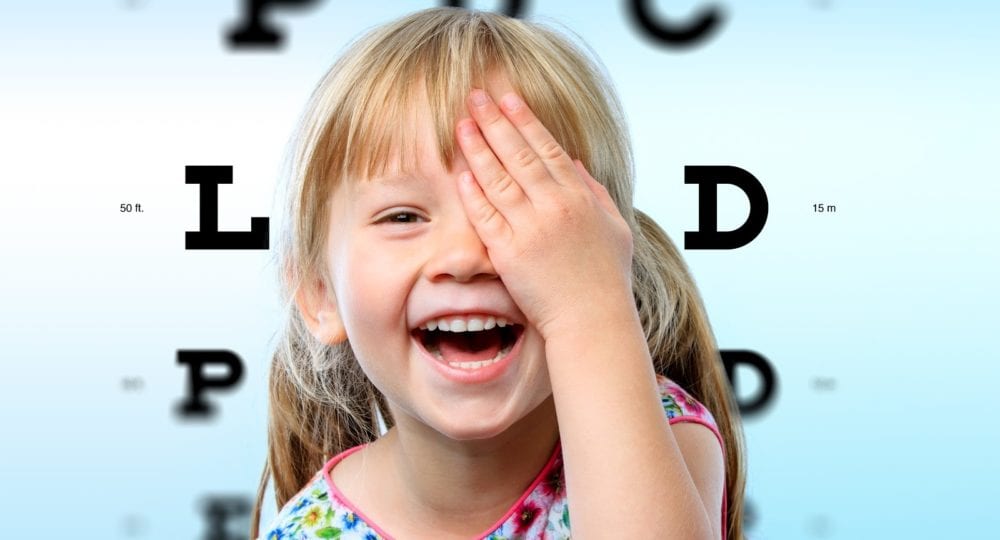Did you realize, a newborn baby cannot tell the difference between two objects visually until 3 months of age? And then not until 5 months of age until the baby develops color vision.
Throughout childhood, vision continues to develop. Babies will move on to judging distance, developing hand-eye coordination, and recognizing familiar objects.
As preschoolers, children are further developing hand-eye-body coordination, fine motor skills, and visual perception needed in order to learn to read and write. According to the American Optometric Association (AOA), about 10% of preschoolers have eye problems, however, at this age, most will not express problems with their eyes.
Therefore, parents should watch for signs that a child may have a vision problem.
By school-age, vision becomes a skill relied on daily both in the classroom and at play. If a child’s vision is not functioning properly, they will have difficulty learning in school. The sooner a vision problem is detected, the sooner it can be addressed and the better the outcome.
The AOA recommends that every child receive an eye exam every year.
Some common childhood eye problems that can be detected include:
- Nearsightedness
- Farsightedness
- Amblyopia (lazy eye)
- Strabismus (crossed or misaligned eyes)
- Ptosis (drooping of the eyelid)
- Color deficiency
Taking measures to protect eyes (of both children and adults) can prevent other problems.
- Wear protective eyewear while participating in sports or recreational activities
- Wear sunglasses when outside that have 99 or 100% UVA and UVB protection
- Ensure toys are age-appropriate (watch for sharp or protruding parts)
- When watching a screen such as a phone, TV or computer, for a long period of time, follow the 20/20/20 rule- Every 20 minutes look about 20 feet away for 20 seconds
In the unfortunate case something does harm a child’s eyes, here are some first aid tips:
- If particles like sand or dust get into the eyes, don’t rub them- Wash eyes out with water
- If an eye gets hit with something hard like a ball or elbow, put a cold compress on the eye for at least 15 minutes to help reduce swelling and pain
- If chemicals splash in an eye, wash the eye out with water for at least 10 minutes, then go see a doctor immediately
- If an object, like a pencil, gets stuck in an eye, don’t pull the object out – put a loose bandage over it if able and go see a doctor immediately
Promoting good eye health through diet is also important. Many vitamins important to eye health are found in fruits and vegetables, such as vitamin A in carrots and vitamin C in citrus fruits and berries. Lutein, found in leafy greens and eggs, is also important. Salmon and tuna are other sources of nutrients important to eye health.
Help make sure your kids reach their full potential this school year by scheduling an eye exam and keeping their eyes safe and healthy!





